Digging Deep: Hedgerow Farms Blog
Lessons learned from mowing and burning native bunchgrasses
By: Julia Michaels, Ph.D.
At Hedgerow Farms, ecological restoration informs everything we do. Restoration projects determine which species and ecotypes we collect from wildlands, plant in our seed production fields, and make available to practitioners for their projects. In this article, however, we talk about the flip side– how native seed farms can inform ecological restoration.
We employ several of the same techniques at our native seed farm that practitioners use in wildland restoration. For example, we use mowing and controlled burning in our perennial bunchgrass fields to encourage these long-lived species to continue producing seed. However, these treatments are usually applied ‘as needed’ and generate only anecdotal results. In Fall 2022, we decided to experimentally test these techniques in our Stipa pulchra (Purple needlegrass) fields using replitcated trials, with the hope of producing statistical results that could be useful beyond our farm. Specifically, we wanted to know whether mowing, swathing, and burning, both alone and in combination, really do impact the number of seeds that a S. pulchra plant produces.
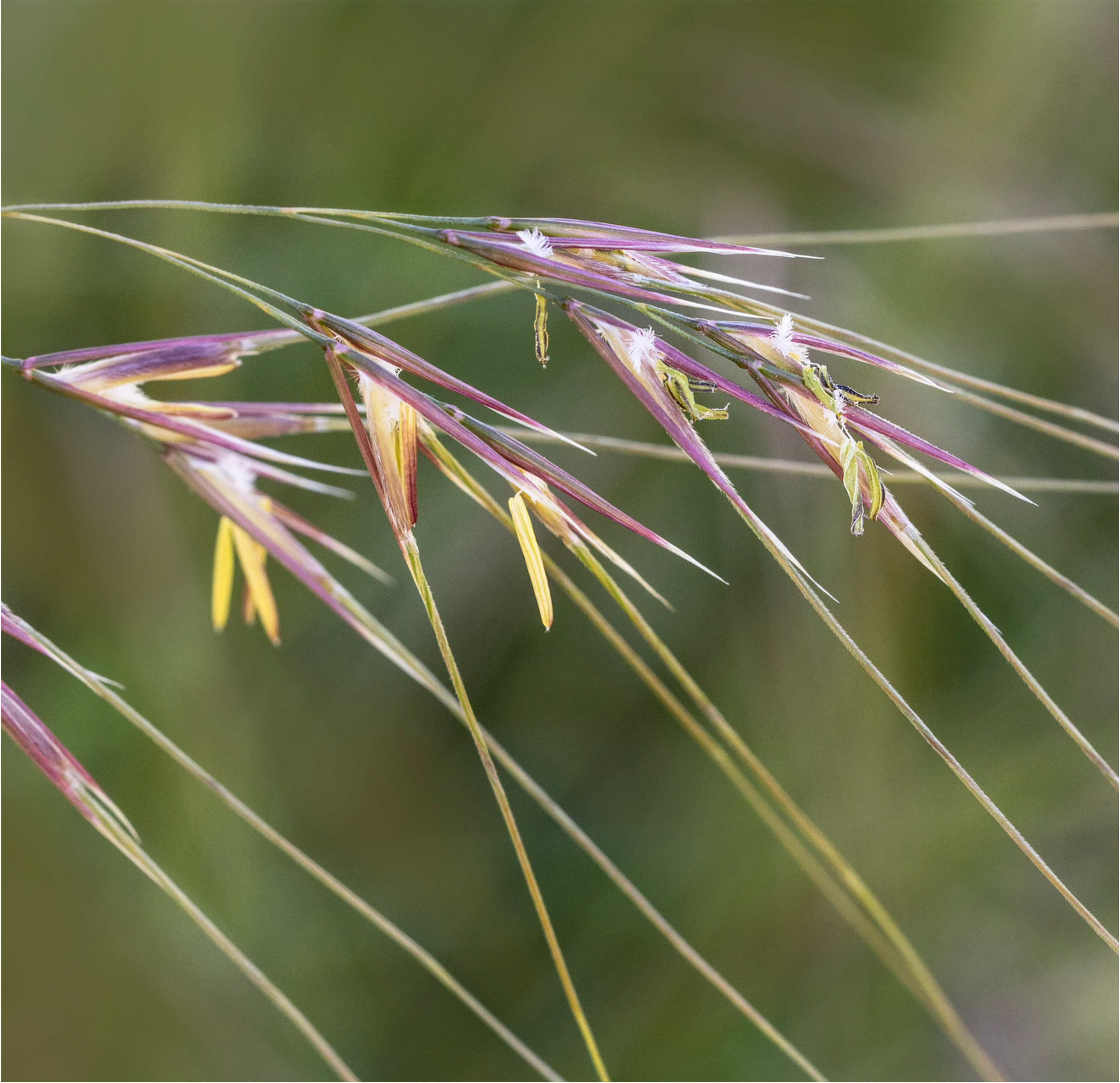
In September 2022, we designed a trial with six replicated treatments. These treatments were spread across five production fields. The S. pulchra fields were grown from seed collected from four original wildland collection locations (‘ecotypes’). The treatments included mowing (in which thatch is cut and removed from the field), swathing (in which thatch is cut and laid on top of the field), and control fields in which no treatment was applied, and thatch was left standing (referred to as ‘Thatch’ fields). In November 2023, we also conducted a controlled burn on a portion of the mowed, swathed, and thatch fields.
Our data collection took place in May 2023. We set up three 120-ft transects per replicated block, walked along each transect and stopped 12 times (every 10 ft). At each stop, we clipped and collected all the seed heads from the nearest individual S. pulchra plant. We then counted every seed head for each sample
To assess the impact of management treatment on seed head count, we used a linear mixed effects model, with treatment as a fixed effect and field (ecotype) as a random effect, which allows us to generalize across ecotype/field. Significance was tested with analysis of variance (ANOVA) followed by a post-hoc multiple pairwise comparison test (p < 0.05) using estimated marginal means. Treatment was found to be significant (F = , p < X). Across all the fields, we found that seed head production in mowed and swathed S. pulchra plants did not differ, but thatch plants produced significantly less seed than any other treatment.
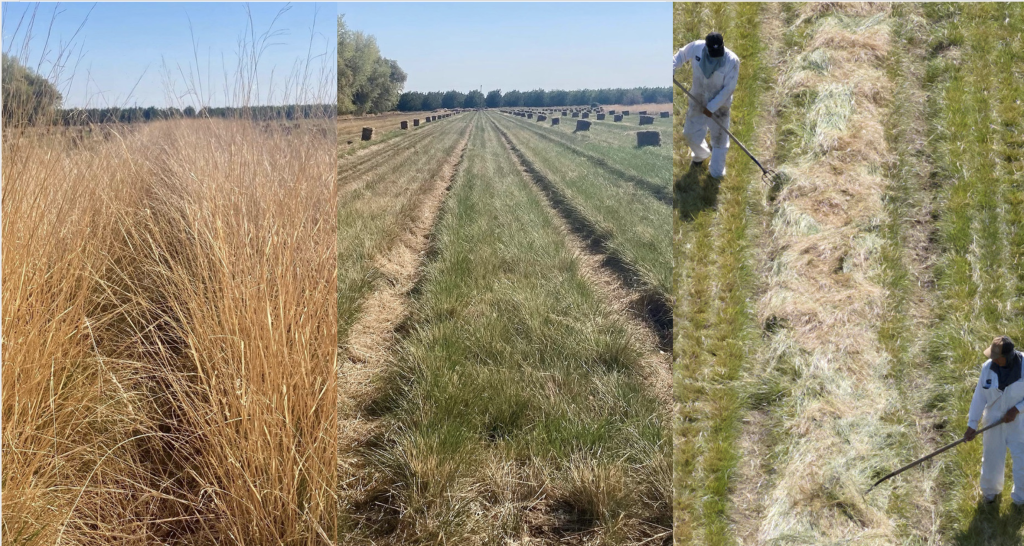
In September 2022, we designed a trial with six replicated treatments. These treatments were spread across five production fields. The S. pulchra fields were grown from seed collected from four original wildland collection locations (‘ecotypes’). The treatments included mowing (in which thatch is cut and removed from the field), swathing (in which thatch is cut and laid on top of the field), and control fields in which no treatment was applied, and thatch was left standing (referred to as ‘Thatch’ fields). In November 2023, we also conducted a controlled burn on a portion of the mowed, swathed, and thatch fields.
Our data collection took place in May 2023. We set up three 120-ft transects per replicated block, walked along each transect and stopped 12 times (every 10 ft). At each stop, we clipped and collected all the seed heads from the nearest individual S. pulchra plant. We then counted every seed head for each sample
To assess the impact of management treatment on seed head count, we used a linear mixed effects model, with treatment as a fixed effect and field (ecotype) as a random effect, which allows us to generalize across ecotype/field. Significance was tested with analysis of variance (ANOVA) followed by a post-hoc multiple pairwise comparison test (p < 0.05) using estimated marginal means. Treatment was found to be significant (F = , p < X). Across all the fields, we found that seed head production in mowed and swathed S. pulchra plants did not differ, but thatch plants produced significantly less seed than any other treatment.
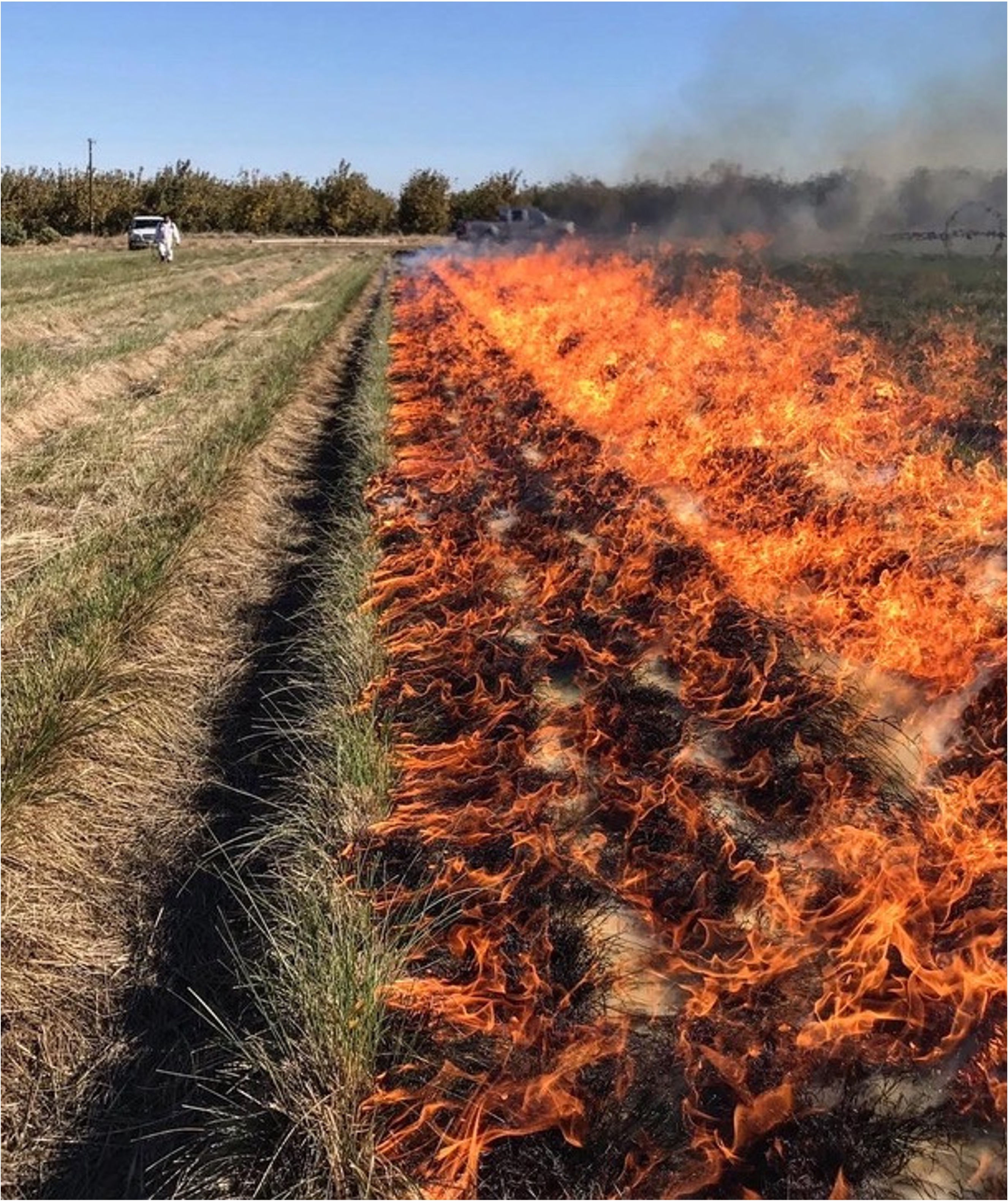
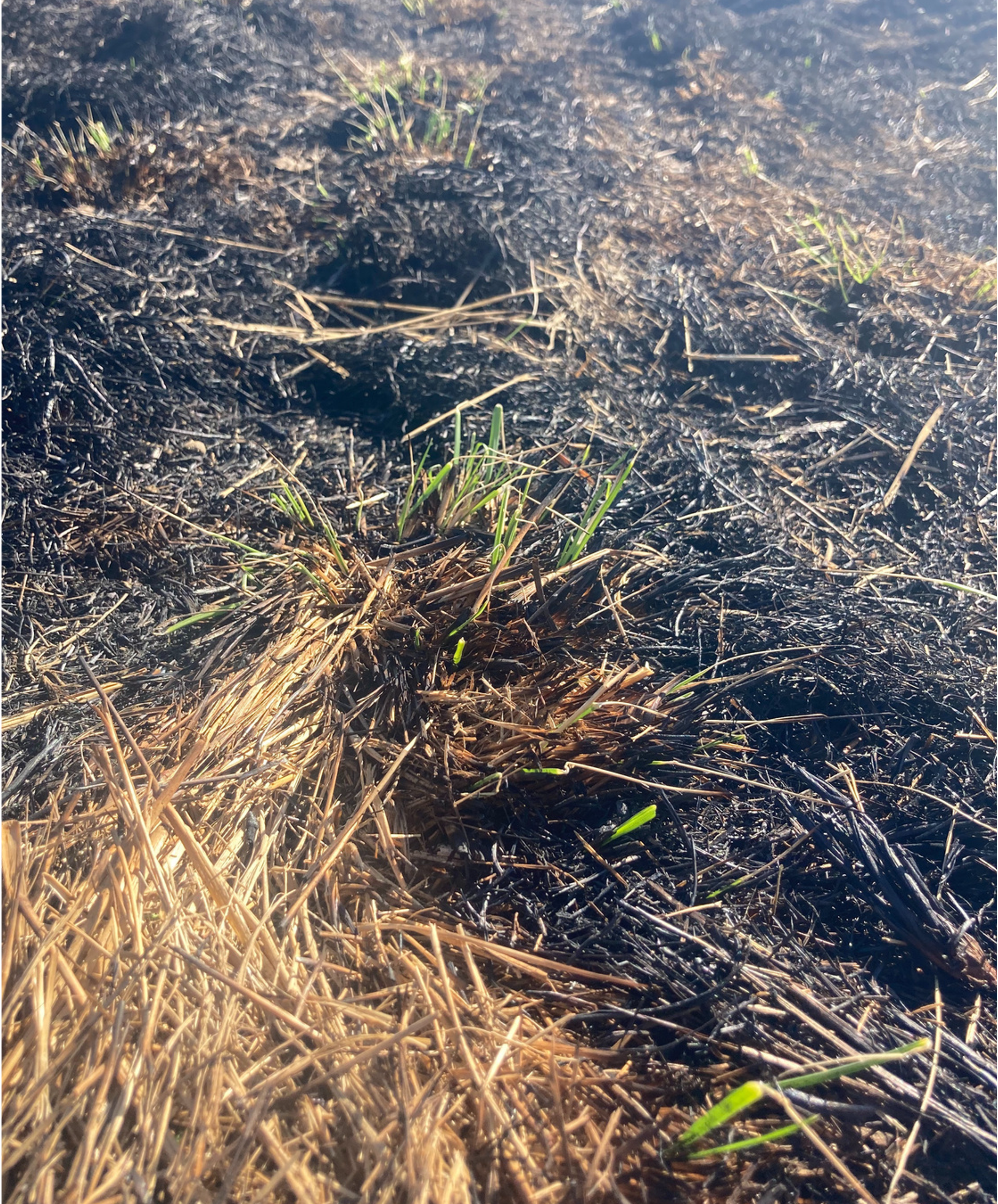
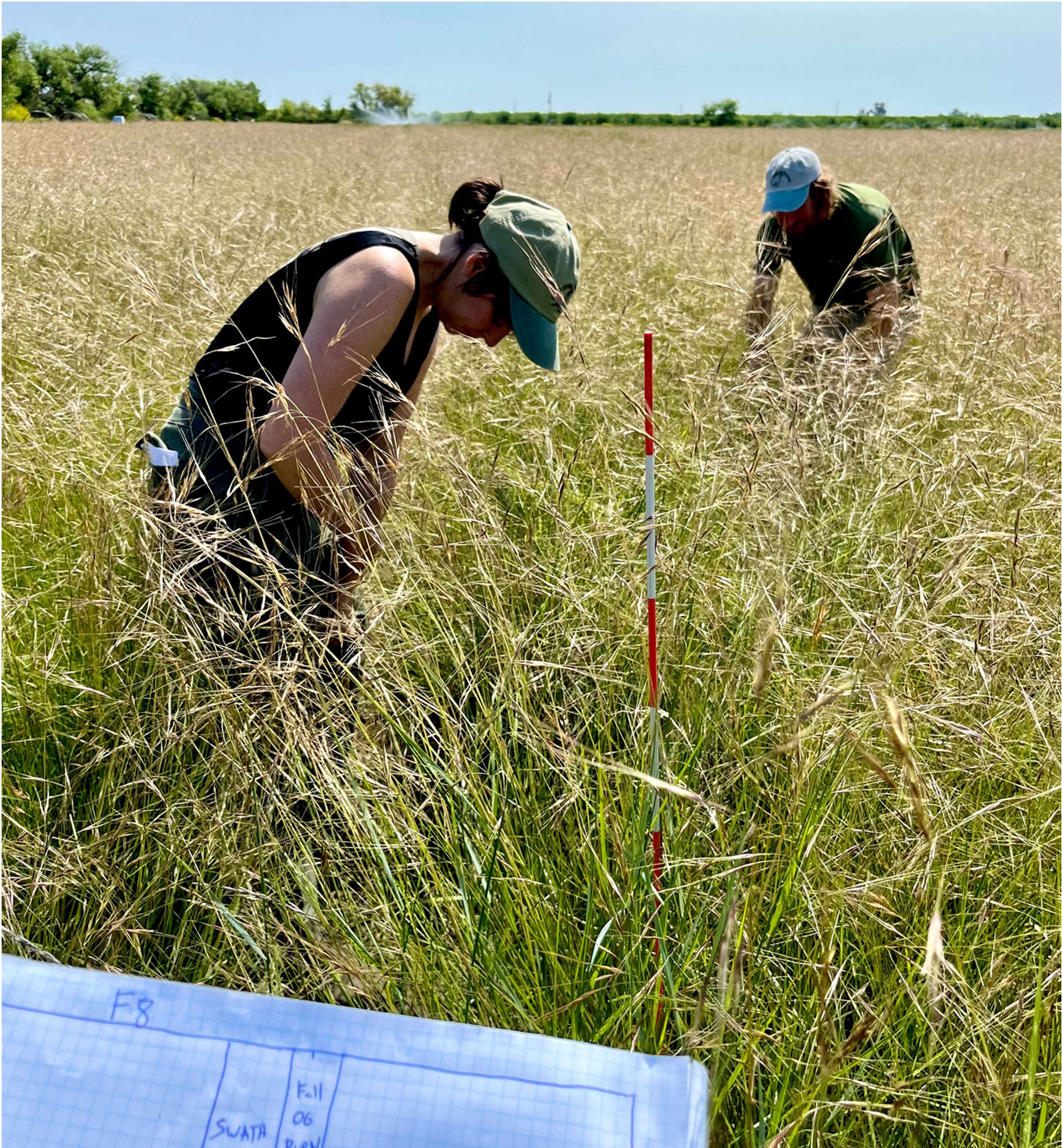
So how might these results be useful for restoration in wildland areas? Practitioners may take these results to suggest that removing aboveground biomass is an important way to encourage seed production in S. pulchra stands. While managers may not practically be able to mow or swath large areas, in restoration ecology experiments, mowing is often considered a proxy for livestock grazing. When left with the choice between mowing/grazing or burning an overgrown, thatchy stand of S. pulchra, our results suggest that practitioners may want to wait on burning until the thatch can be reduced through mowing or grazing.
As the demand for native seed increases, restoration sites themselves will become critical sources for local native plant material. While restoration practitioners must balance many priorities such as invasive species control and biodiversity, they may also want to consider how their management impacts seed production, so that we can continue to harvest native seed well into the future. Increased seed production also leads to important stand regeneration & dispersal across a restoration site.